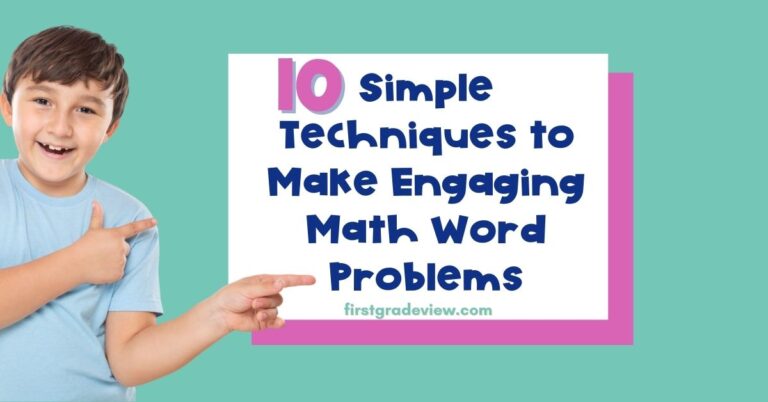Welcome back to the last post in this series all about the 8 Standard Math Practices! In this blog series, I have provided examples of how you can easily incorporate the 8 Standards of Mathematical Practices into any math lesson. In this post, I will cover Math Practices 7 and 8.
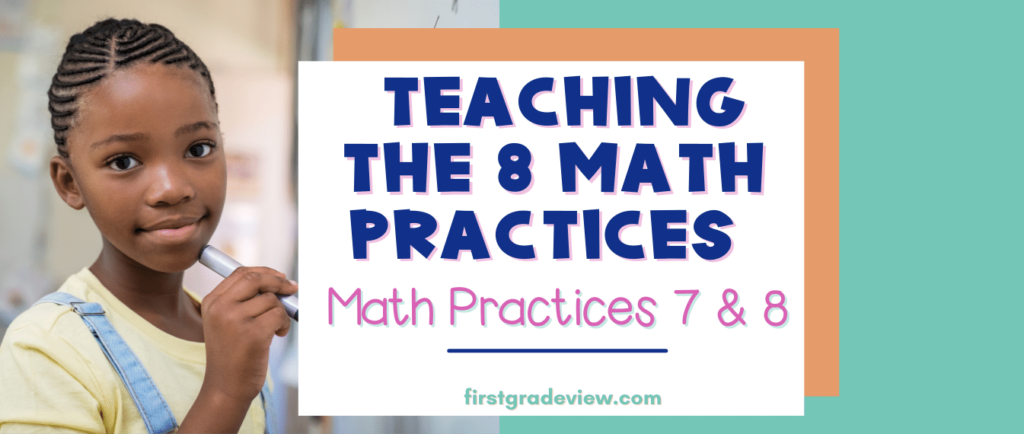
When I was about eight years old, I got a tabletop arcade version of Ms. Pac-Man. Boy, was I excited! I remember the first few times I played, I got frustrated because I kept getting caught by the ghosts. However, the more I played, I was able to make use of the structure of the game. I quickly discovered that each level consisted of a maze. There were a total of 4 different mazes, each a different color, and they repeated on certain levels. Once I realized this, I was able to try out different strategies depending on the maze. I became more efficient in knowing which strategy to use. I was able to better my score and get all the dots before the ghosts got me!
Math Practices 7 and 8 are kind of like my experience with Ms. Pac-Man. In math, we want students to notice patterns and structures. Once students do this, they can make use of those structures. When they recognize repeated patterns in math, they can make generalizations and discover shortcuts to solve the problem in a more efficient way. My students love the idea of relating math to playing video games and seeing how using patterns to discover more efficient strategies in math is just like leveling up in a game!
Teaching Standard Math Practices
Math Practice 7: Look For And Make Use Of Structure
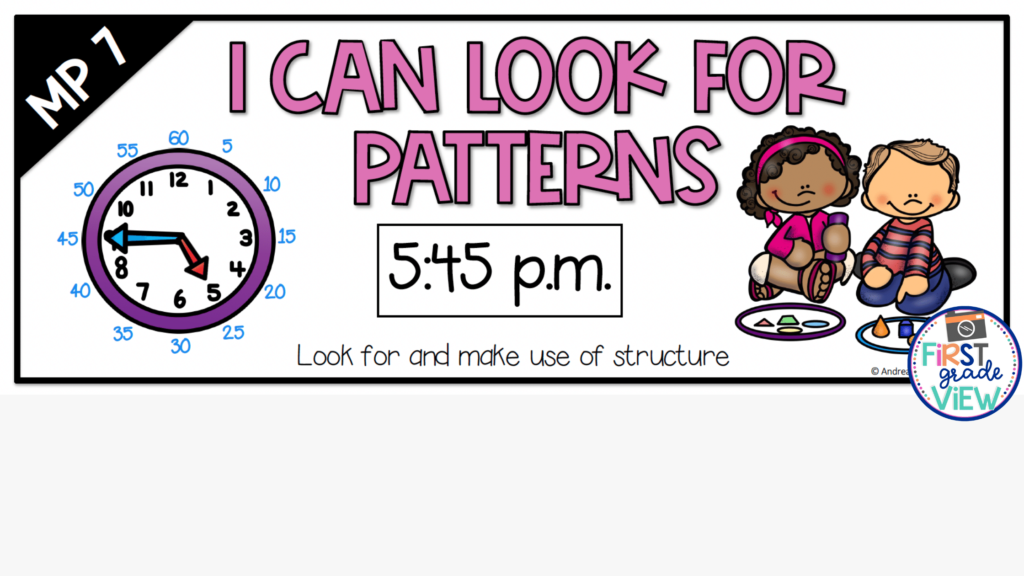
In this math practice, students make use of structure by looking for and noticing patterns in numbers, shapes, computations, and math properties. For example, they may notice that 3+2=5 so, 3 birds + 2 birds = 5 birds and 3 tens + 2 tens = 5 tens. Another example is when students understand that 15 is 1 ten, 5 ones so, 25 is 2 tens, 5 ones. In essence, they are building their number sense and are able to take ideas that can be generalized and apply them in novel situations.
As the teacher, you can support students in making use of structure by providing opportunities for students to discover and explore structure. It is also important to recognize when students are working on an idea connected to structure and use questioning and comments to help them see it. Lastly, support students when they apply previously learned knowledge in new math tasks/problems.
Activities to Build the Standard Math Practice 7
The following activities are examples of how students can build this math habit.
What’s My Number?– In this activity, students are given a series of four directions to carry out using a 120 chart. Each step should involve either adding or subtracting. After the last direction, students should tell you what number they landed on. What’s my Number has been one of my go to activities for helping my students build their number sense!
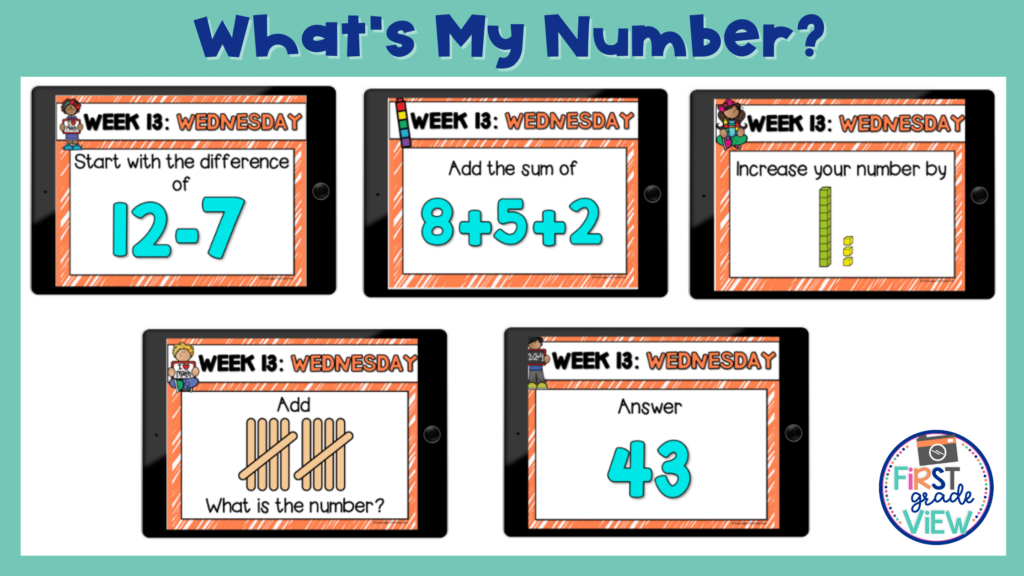
When this activity is done on a consistent basis, it helps students recognize how the 120 chart is structured. As you notice students using the structure to add or subtract, you can have them share their strategy with their peers. For example, you may notice a student adds 14+15 by quickly adding 10 more than counting on 5. You can have them share their strategy with students you notice are counting on by ones.
Double Compare– In this game, students each draw 2 cards (they can use playing cards or subitizing cards such as ten frame cards). They must count and compare their totals with one another. The student with the higher total gets to keep the cards. As students play, be sure to go around and ask them their strategies for counting their totals to compare.
Math Talk– You can present students with a math claim and give them time to prove or defend it through a math model, using manipulatives, drawings, etc. When using this type of math talk, it is important to consider the needs of your students. You want to make sure the structure you want them to explore is one that they are developmentally ready for.
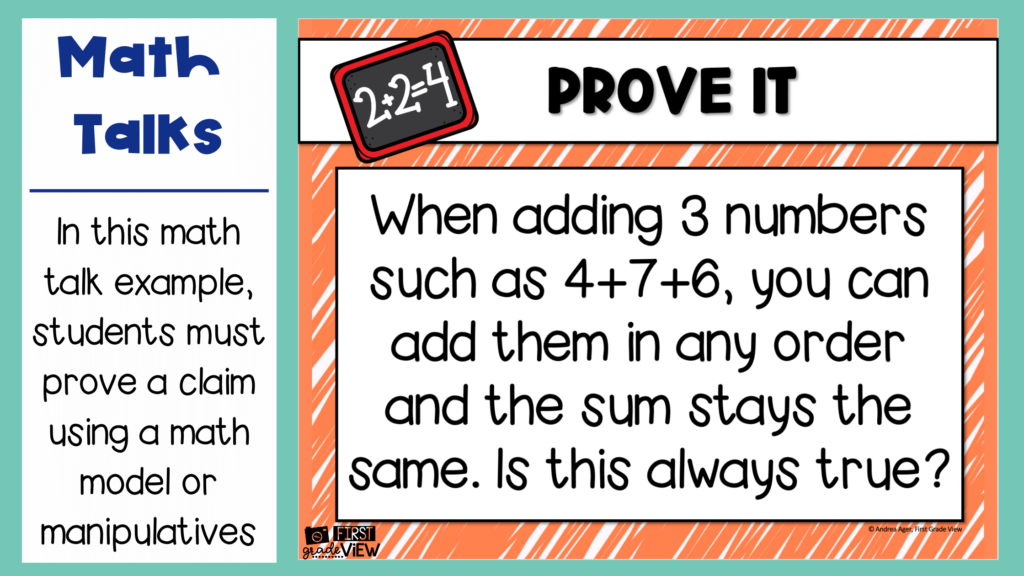
Questions to Develop Math Practice 7
You can use the following questions with any math task to help develop Math Practice 7 with your students.
- What patterns do you notice?
- How does this relate to…?
- What have you learned before that can help you solve this problem?
- What do you notice about the solutions to the problems you have just completed?
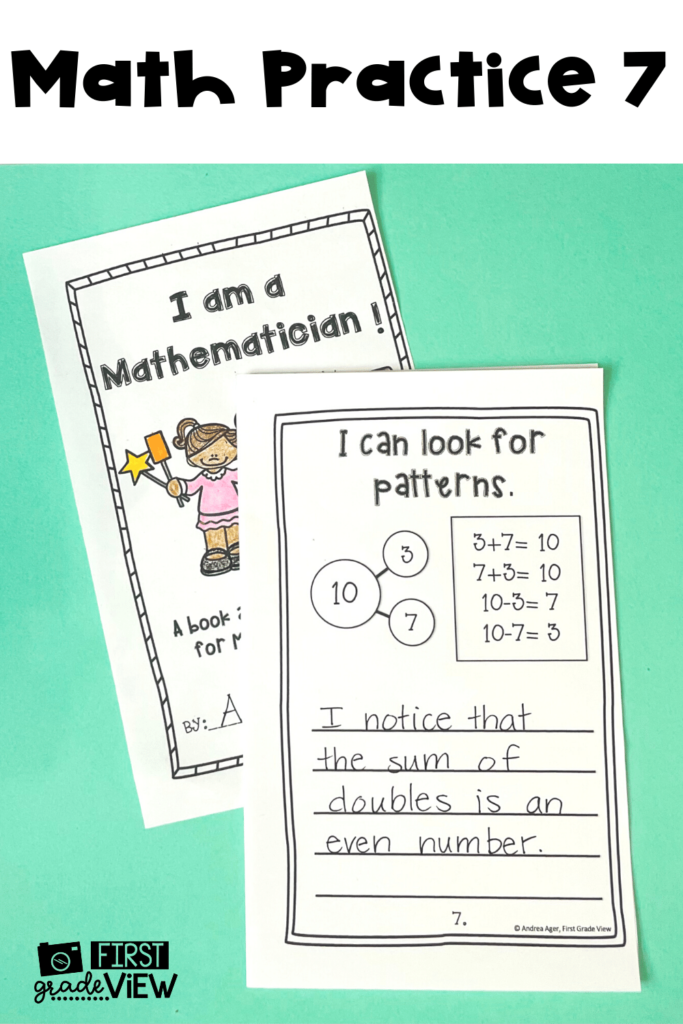
Math Practice 8: Look For And Express Regularity In Repeated Reasoning
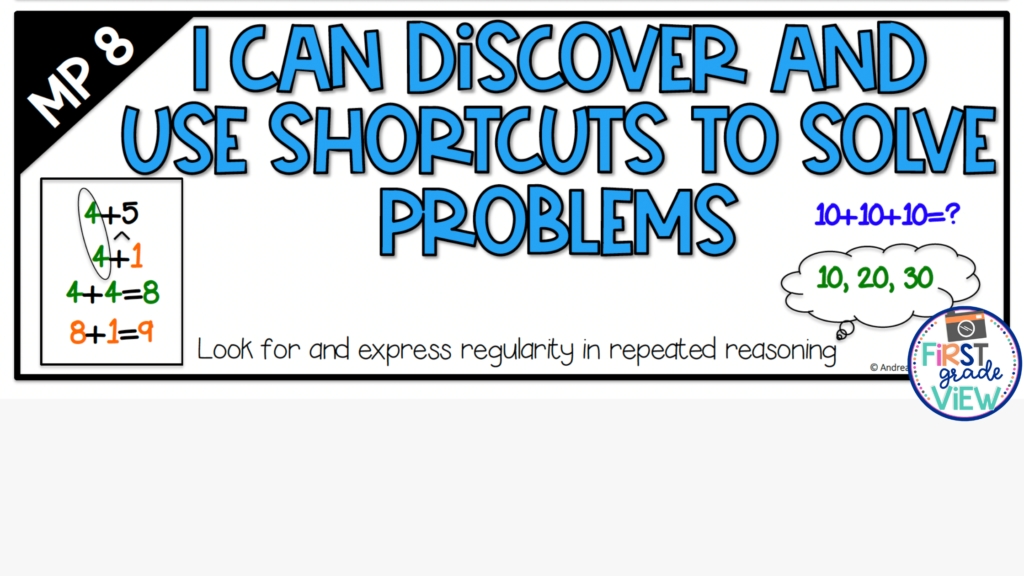
In this math practice, students can see repeated patterns and use shortcuts to solve problems. Students are able to make generalizations and come up with math rules. For example, a student may use their knowledge of doubles to solve 9+8. Since they know 8+8=16, they know that 9+8=17 because it is the same as 8+8+1. Students can then generalize this strategy when adding other problems that have near doubles such as 4+5 or 7+8. As students practice this math habit, they develop efficient problem solving strategies.
Activities to Build the Standard Math Practice 8
The following activities are examples of how students can build this math habit.
Problem Solving– Teaching through problem solving is a great way to help students see patterns and use shortcuts to solve. Students benefit when their peers share their math thinking and strategies. By reflecting on other children’s approaches, the class can develop more efficient problem solving strategies.
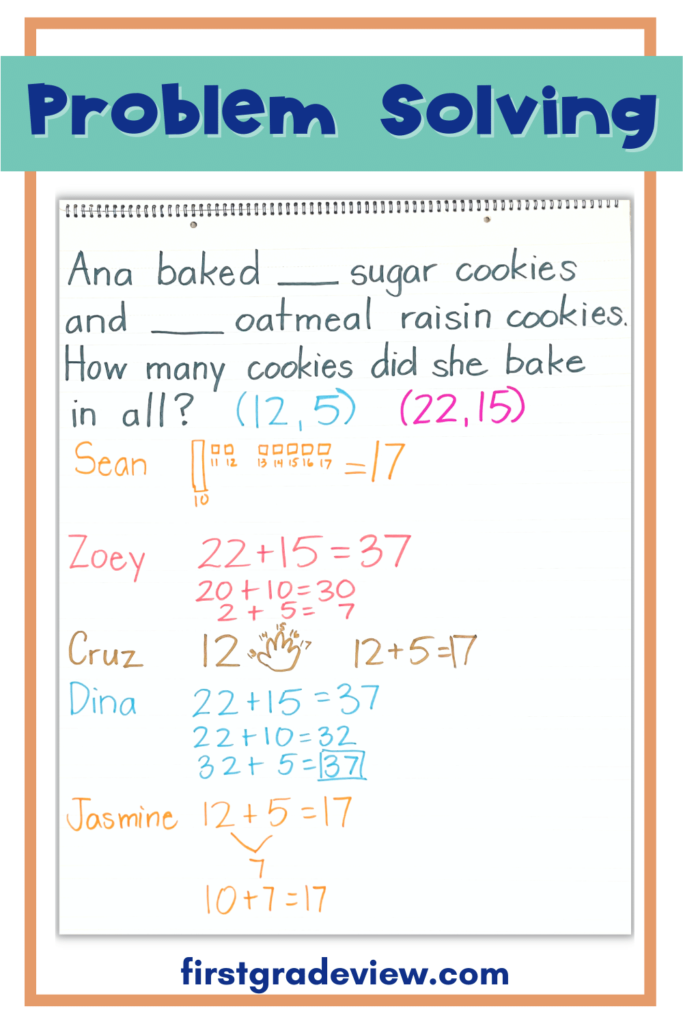
Class Chart– One way you can establish the practice of seeing patterns and making generalizations is to stimulate student interest in a particular regularity and why it exists. Create a chart with your class titled: Our Math Wonderings. Have students brainstorm questions or things they wonder about math. Set aside time to address the wonderings with students.
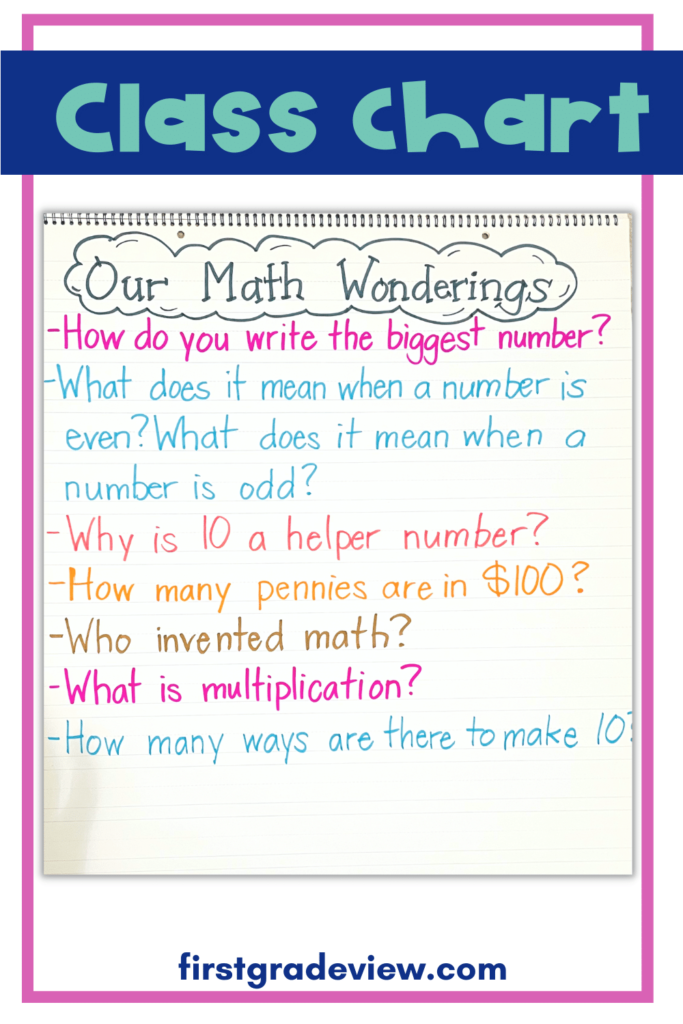
Number Strings– Number strings are a set of related math problems that help students notice relationships among math facts and build their math strategies. This is a great way to build Math Practice 8. As students notice patterns, ask them if they can come up with a math claim or rule.
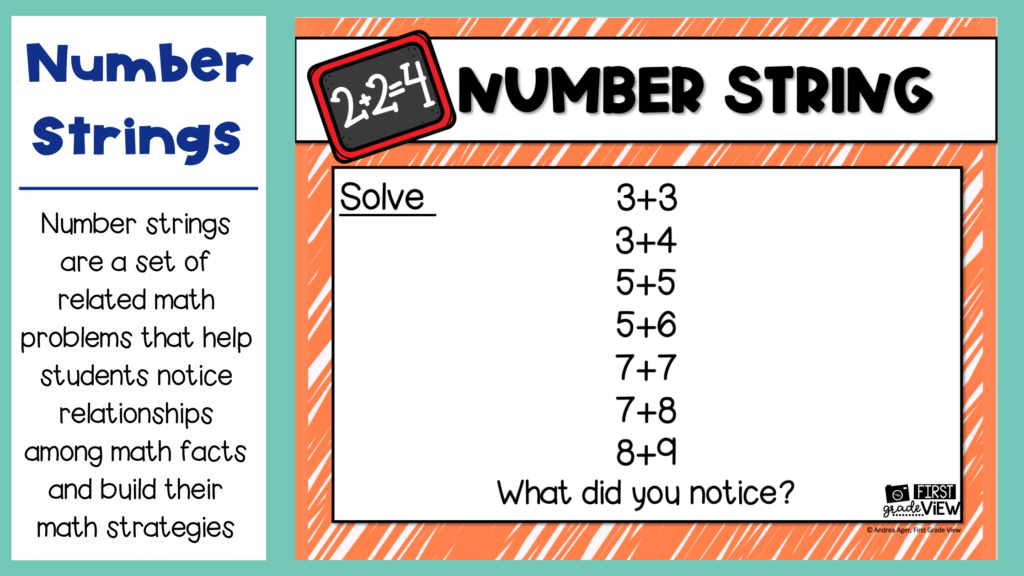
Questions to Develop Math Practice 8
You can use the following questions with any math task to help develop Math Practice 8 with your students.
- What do you see happening?
- Will that always work?
- Can you create a math rule/claim for..”
- Will that same strategy work in other situations?
- Is this always true, sometimes true, or never true?
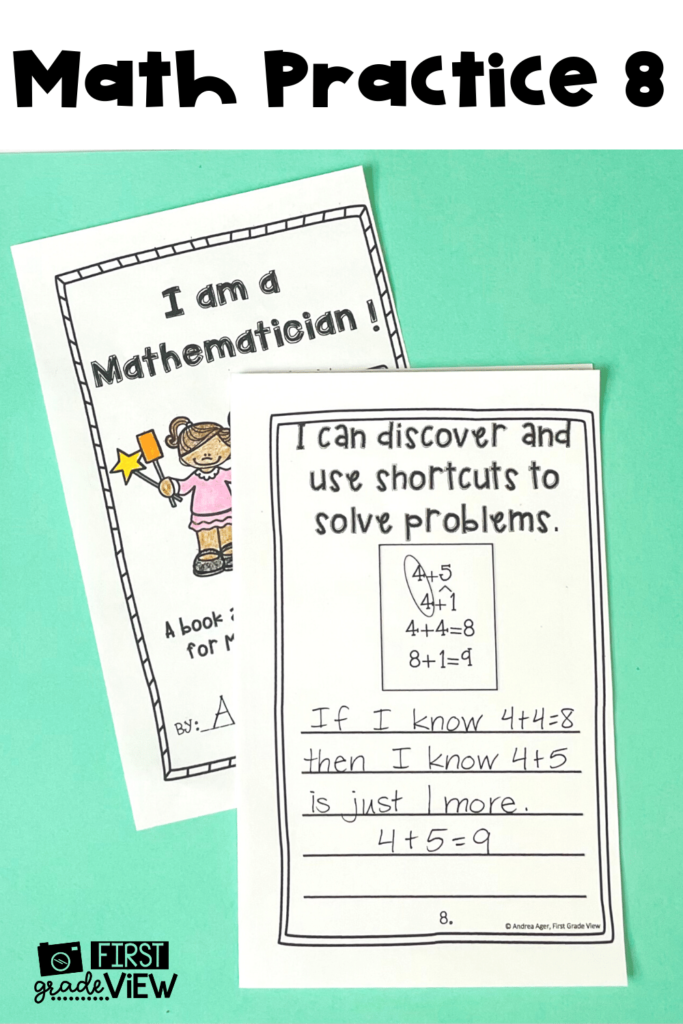
As you can see, engaging students in the 8 Standard Math Practices is important work in laying the foundation for students to develop the habits needed to become strong mathematical thinkers. As you become more familiar with the math practices, you will feel more comfortable in knowing when to point them out during your math lessons. Remember that most math lessons or tasks will involve multiple practices as they do not occur in isolation.
I hope this series on the 8 Standard Math Practices has been helpful! By incorporating the practices in your classroom on a regular basis, you will empower students to develop number sense, have a better understanding of our number system, operations, geometry, algebra, and any other math task they may encounter! Be sure to grab a set of these math practice posters for your classroom! If you have other ideas on how to teach the math practices, please comment below. I’d love to hear your thoughts!
You may also like:
Build Math Habits: Notice Patterns & Structure
Standard of Mathematical: Importance of Tools and Precision
Mathematical Practice Standards: How to Easily Teach Them in Any Lesson
Standards of Math Practice: Helping Kids Be Great Mathematicians

